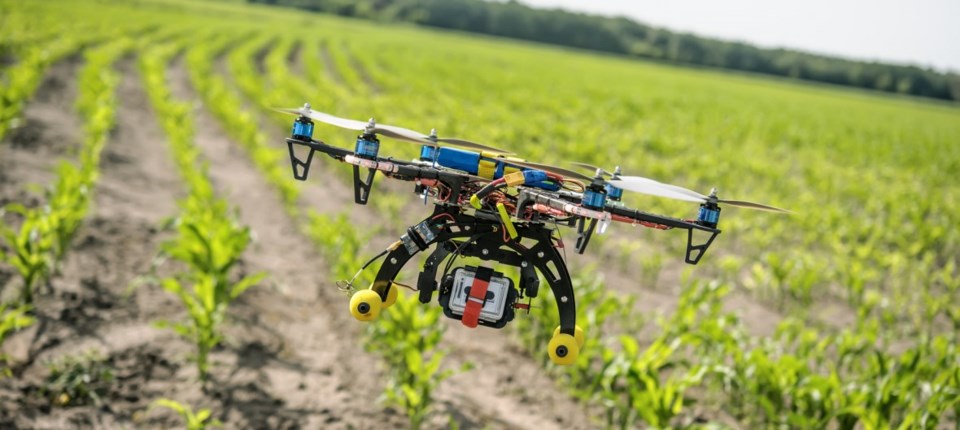These day, the modern farmer in Saskatchewan is turning more and more to the latest high-tech gadgets to help increase production and lower costs. Technology now extends well beyond the smart phone and computer in a tractor cab. There are now some military applications that were adapted to farming.
“GPS is really getting to be a must,” said Dave Carpenter from Farmtronics in Regina. The GPS can help map fields for seeding the precise amount of grain and using the right volumes of inputs. Carpenter added that the GPS use is on the rise because producers are purchasing larger equipment. For example, a GPS can be set up so multiple pieces of equipment are working off the same system.
The price tag may seem ominous to first time buyers, from $3,000 up to $15,000 for variable, but producers say that it saves them money and time. The GPS allows producers to stay on fields longer and helps the producer avoid fatigue. There is no overlap while seeding or overuse of inputs.
Perhaps the most popular item farmers are scooping up these days are fixed cameras. “It’s huge,” Carpenter noted. Cameras are now being installed in barns to monitor cows during calving season with live feed available on computers or mobile phones. The security camera is also being installed all over farms, such as by fuel tanks, on equipment, and around the property fence lines.
Another high-tech gadget coming from the military applications to agriculture is the drone technology. Producers are increasingly buying drones to check their crops. “A drone is a collection tool,” said Greg Adelman of Crop Command Agronomy. Drones can be used to check fertility or general crop health.
The camera and resolution will depend on its use. The camera size and resolution and the flight height can be adjusted if producers want to inspect for specific factors like pests, weeds or hail damage. For example, to inspect seedlings, a 1 mm resolution would be needed, while a 25 mm is ideal for detailed information.
“A drone is used for anything where a human cannot get to or it is not safe,” Adelman added.
Carpenter said that drones are popular because they help to prevent crop damage from having to drive through a field. Drones can also be used to fly over pastureland to check for livestock herds. Drones with thermal cameras can be sent out over hilly pastures to locate livestock, or use the NDVO technology to monitor pasture grasses or algae blooms.
“Drones for the most part are used for general photography, said Adelman. It’s a simple and inexpensive way to get pictures of yards, fields and equipment.
Effective drone technologies are still a way off. “The efficiencies are not there yet,” Adelman said. Some of the drawbacks for drones include they must remain in the line of sight for the signal, giving them a limited flight range.
“You can’t cover more than 160 acres,” said Adelman. Anything more than a quarter section, such as large tracts of land, would be better off with a manned aircraft.



